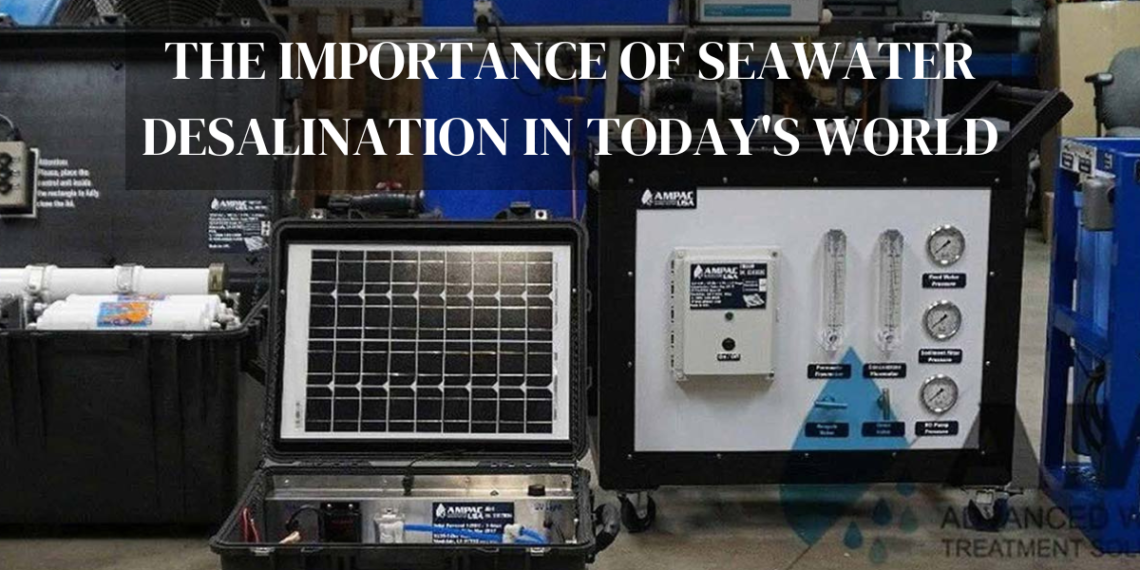Last updated on December 6th, 2025 at 11:47 am
Seawater DesalinationImportance in Today’s World: Water is essential for life on Earth, and yet, it is a resource often taken for granted. With increasing global population, industrial development, and the impacts of climate change, freshwater scarcity has become a critical challenge facing humanity. In this blog, we will explore the importance of seawater desalination in addressing water scarcity and ensuring a sustainable future for all.
The Global Water Crisis: A Growing Concern
According to the United Nations, nearly 2.2 billion people around the world lack access to safely managed drinking water services, and 4.2 billion people lack access to safely managed sanitation services. By 2025, it is estimated that two-thirds of the global population could be under water stress, with 1.8 billion people experiencing absolute water scarcity.
In light of these alarming statistics, it becomes evident that innovative and sustainable solutions are needed to address the global water crisis. One such solution is seawater desalination – the process of removing salts and impurities from seawater to produce fresh water for human consumption and various other uses.
Seawater Desalination: Turning the Tides for a Sustainable Future
Seawater desalination has become an increasingly important method for augmenting freshwater supplies, especially in regions with limited access to fresh water resources. Currently, over 20,000 desalination plants exist worldwide, producing more than 96.5 million cubic meters of freshwater daily.
Here are some key facts highlighting the importance of seawater desalination:
Drought-Proof Water Supply: Desalination plants are not dependent on rainfall, making them an ideal solution for drought-prone regions or areas experiencing prolonged dry spells. For example, Israel now obtains 60% of its domestic water supply from desalinated seawater, providing a reliable water source in an arid environment.
Economic Benefits: Desalinated water can be a cost-effective solution for water-stressed regions, especially when considering the expenses related to water scarcity, such as lost agricultural production and economic instability. In some cases, desalination can be less expensive than importing water from distant sources or developing new infrastructure to access remote water reserves.
Environmental Advancements: Modern desalination technologies have significantly improved in terms of energy efficiency and environmental impact. For instance, the development of more efficient reverse osmosis membranes has reduced energy consumption by up to 50% compared to earlier technologies, while the implementation of renewable energy sources, like solar and wind power, further minimizes the carbon footprint of land based watermakers plants.
Supporting Agriculture and Industry: Desalination can contribute to agricultural and industrial growth by providing a stable supply of fresh water. In regions where water scarcity limits agricultural productivity or hinders industrial processes, desalinated water can be a game-changer, promoting economic growth and food security.
Challenges and the Path Forward: While seawater desalination offers significant benefits, it is not without its challenges. Some concerns include the high energy consumption of emergency portable seawater desalination plants, the production of concentrated brine waste, and potential impacts on marine ecosystems. However, ongoing research and technological advancements are working to address these issues, making desalination a more sustainable and efficient solution provided by Ampac USA.
Seawater desalination plays a crucial role in addressing the global water crisis by providing a reliable source of fresh water to meet the needs of a growing population. As the world faces increasing water scarcity, investing in sustainable desalination technologies is essential to ensuring a more resilient and water-secure future.
Read more: Forward Osmosis Membranes











